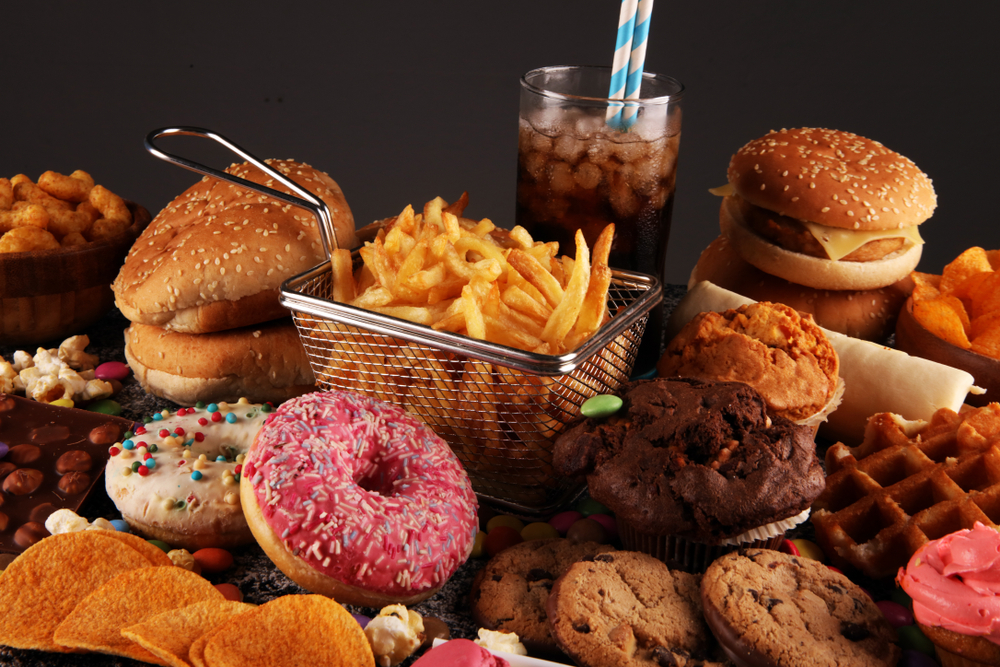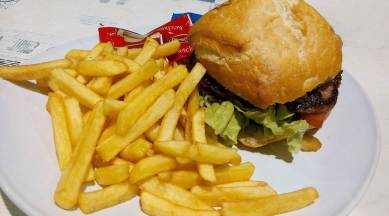
The Whole30 is a diet that resets your metabolism and cleanses your digestive tract. You won't have the option to eat fast food or junk food. Additionally, you will have to stay away from soy and dairy. But you can still eat plenty of vegetables and fruits, which can be an ideal alternative to fast-food. It also contains recipes for healthy snacks, and meals. These nutritious and delicious treats don't have to compromise the flavor of the food you love.
The Whole30 diet allows you to eat various kinds of fruits, veggies, and fats. You don't need to eliminate all of these foods from the Whole30 diet, but you do have to be careful about which ones you avoid. The Whole30 website contains a list listing all allowed and forbidden foods. The Whole30 website also offers a free download of the chart. You can either print it, keep it in your wallet or save it to your smartphone.
While you can't consume packaged foods, they can be purchased in any store that stocks them. These foods aren't included on the Whole30 diet, even though technically they do. Instead, the Whole30 diet encourages you to eat more natural and unprocessed food, such as fruits and nuts. While you are eating more vegetables than ever before, processed meat will not be available to you. So make sure to read the labels.

The Whole 30 Plan encourages you to eat more vegetables that you would normally. They are higher in nutrients and fiber. The Whole30 diet does not allow cowboy ribeyes to be eaten for more than 30 days. Vegetables are rich in fiber and minerals. You shouldn't make fruit a staple of your diet. Fruits are high-in natural sugar. A lot of people don't even realize that they're eating too much sugar.
A whole30 diet will allow you to eat as many vegetables as you like, but it won't allow you to eat potatoes. You can eat fruits and vegetables without restrictions, but you should avoid processed cheese and red meat, which are known to cause bloating. These items will need to be bought from a grocery that carries them.
Other Whole30 friendly foods include fish and eggs. They can be used in stir-fries and salads. But, it's important not to consume too much. It is possible to eat them in moderation provided that you choose the right food. And while you may not be able to enjoy chocolate, you can eat carrots and almond butter. Additionally, almond butter and vegetable liquid can be consumed in moderation.
A Whole30 diet isn't for everyone, but it's a good way to detoxify your body and lose weight. It's also an excellent way to feel healthier and eat better. It's important to be familiar with the basics of the program if you are new to it. It is a good idea to eat these foods often if you are unsure of what foods you should include.

Coconut oil can also be used to fry bananas or plantains. This is allowed on Whole30. Coconut oil can be used to fry bananas and plantains, but it is best to avoid overripe bananas. Avocados are a staple of Whole30, and will help you manage your cravings. To reap the full benefits of Whole30, it's best to stick with it for at least a few weeks.
The Whole30 Diet is a good way to break bad eating habits. You can avoid sugary processed foods. Your body can feel good by eating whole, unprocessed foods. Whole30 doesn't require that you count calories, weigh yourself, or measure portions. You can do Whole30 without any of these traditional lifestyles. You should make sure there are no side effect while on Whole30.
FAQ
What can you do if your immune system is weak?
Human bodies are made up of trillions upon trillions of cells. These cells collaborate to create organs, tissues and other functions. When one cell dies, another cell replaces it. Chemical signals, called hormones, allow cells to communicate with each other. Hormones regulate all bodily processes, from growth and development to metabolism and immunity.
Hormones refer to chemicals produced throughout the body by glands. They travel through our bloodstream and act as messengers, controlling how our bodies function. Some hormones come from the body and others from outside.
The release of hormones from a hormone producing gland into the bloodstream is the beginning of hormone production. Once hormones become active, they move throughout the body until reaching their target organ. In some cases hormones can remain active for only a few hours. Other hormones stay active longer and continue to influence the body's functioning even after they leave the bloodstream.
Some hormones may be produced in large numbers. Others are produced in smaller amounts.
Some hormones only are produced during certain periods of life. For example, estrogen is made during puberty. Women can get estrogen to build breasts, prevent osteoporosis, and keep their bones healthy. It also promotes hair growth and keeps skin smooth and soft.
What are the ten best foods to eat in America?
The 10 best foods to eat include:
-
Avocados
-
Berries
-
Broccoli
-
Cauliflower
-
Eggs
-
Fish
-
Grains
-
Nuts
-
Oats
-
Salmon
What is the difference of a virus from a bacteria?
A virus is an organism microscopic that can't reproduce outside its host cells. A bacterium can be described as a single-celled organism which reproduces by splitting in two. Viruses measure only 20 nanometers in diameter, but bacteria is up to 1 millimeter in size.
Viruses are often spread through contact of infected bodily fluids like saliva, urine or semen. Bacteria is usually spread directly from surfaces or objects contaminated with bacteria.
Viral infections can be transmitted through skin cuts, scrapes and bites. They can also penetrate the skin through the eyes, nose or mouth.
Bacteria can get into our bodies through cuts, scrapes and burns, insect bites, or other skin breaks. They may also be introduced into our bodies through food and water as well as soil, dirt, dust, and animals.
Both viruses and bacteria can cause illness. Viruses cannot multiply in their host cells. They infect only living cells, causing illness.
Bacteria can spread within the host and cause illness. They can infiltrate other parts of the body. We need antibiotics to get rid of them.
Do I need calories to count?
You may be wondering "what is the best diet for you?" or "is counting calories necessary?" The answer to this question depends on many factors, including your current health, your personal goals and preferences, as well as your overall lifestyle.
The Best Diet For Me - Which One Is Right For You?
My current health status, personal goals, preferences, and overall lifestyle all play a role in choosing the right diet. There are many different diets, some good and some not so good. Some work well for certain people while others don't. What should I do then? How do I make the right decision?
These are the questions this article will answer. The article starts by introducing the many types of diets currently available. After that, you will learn about the pros and disadvantages of each type. Then, we will discuss which diet is the best.
Let's start by taking a look at the various types of diets.
Diet Types
There are three main types. Low fat, high proteins, and ketogenic. Let's briefly discuss them below.
Low Fat Diets
A low fat diet is a diet that restricts the amount of fats consumed. This is achieved by reducing saturated fats like butter, cream cheese, and other dairy products. It is possible to replace these saturated fats with unsaturated ones (olive oil or avocados). For those looking to lose weight quickly, a low-fat diet is often recommended. This type of diet can lead to constipation and heartburn as well as indigestion. Vitamin deficiencies can also occur if the person doesn't get enough vitamins through their diet.
High Protein Diets
High protein diets restrict carbohydrates in favor of proteins. These diets typically have more protein than other diets. These diets are intended to increase muscle mass and reduce calories. The downside is that they may not provide adequate nutrition for someone who needs to eat regularly. They are also very restrictive, so they might not be appropriate for everyone.
Ketogenic Diets
Ketogenic diets are also known as keto diets. They are high-fat and low in carbs and protein. These are often used by bodybuilders and athletes because they allow them the ability to train harder and for longer periods of time without feeling tired. However, they must be used with caution to avoid nausea, headaches and fatigue.
How can I get enough vitamins?
Your diet can provide most of your daily requirements. Supplements can be helpful if you are lacking in any one vitamin. Multivitamin supplements can be taken that contain all the vitamins you need. You can also buy individual vitamins in your local drugstore.
Talk to your doctor to find out which foods are rich in vitamins. Some examples of rich sources of vitamins E and K include dark green leafy vegetables, such as spinach.
Ask your doctor if you're not sure how many vitamins you should take. Based on your medical history and your current health, your doctor can recommend the correct dosage.
Statistics
- WHO recommends consuming less than 5% of total energy intake for additional health benefits. (who.int)
- According to the 2020 Dietary Guidelines for Americans, a balanced diet high in fruits and vegetables, lean protein, low-fat dairy and whole grains is needed for optimal energy. (mayoclinichealthsystem.org)
- nutrients.[17]X Research sourceWhole grains to try include: 100% whole wheat pasta and bread, brown rice, whole grain oats, farro, millet, quinoa, and barley. (wikihow.com)
- In both adults and children, the intake of free sugars should be reduced to less than 10% of total energy intake. (who.int)
External Links
How To
27 Steps to a Healthy Lifestyle when Your Family Buys Junk Food
Cooking at home is the most popular way to eat healthier. It can be difficult to cook healthy meals at home. This article will provide some helpful tips for making healthier dining out choices.
-
Select restaurants that offer healthy dishes.
-
Order salads before you order meat dishes.
-
Ask for sauces that aren't sweetened.
-
Avoid fried foods.
-
Grilled meats are better than fried.
-
You shouldn't order dessert unless it is absolutely necessary.
-
After dinner, make sure you have something to eat.
-
Always eat slowly and chew your food thoroughly.
-
When you eat, drink plenty of fluids.
-
Do not skip breakfast or lunch.
-
Take fruit and vegetables along with every meal.
-
Consider drinking milk instead of soda.
-
Try to stay away from sugary drinks.
-
Limit salt consumption in your diet.
-
Try to limit the time you go to fast food places.
-
Ask someone to join if temptation is too much.
-
Your children shouldn't watch too much television.
-
When you are eating, keep the television off.
-
Do not drink energy drinks.
-
Take frequent breaks from your job.
-
Exercise early in the morning.
-
Move every day.
-
Start small and build up gradually.
-
Set realistic goals.
-
Be patient.
-
Find time to exercise even if you don't feel like it.
-
Use positive thinking.